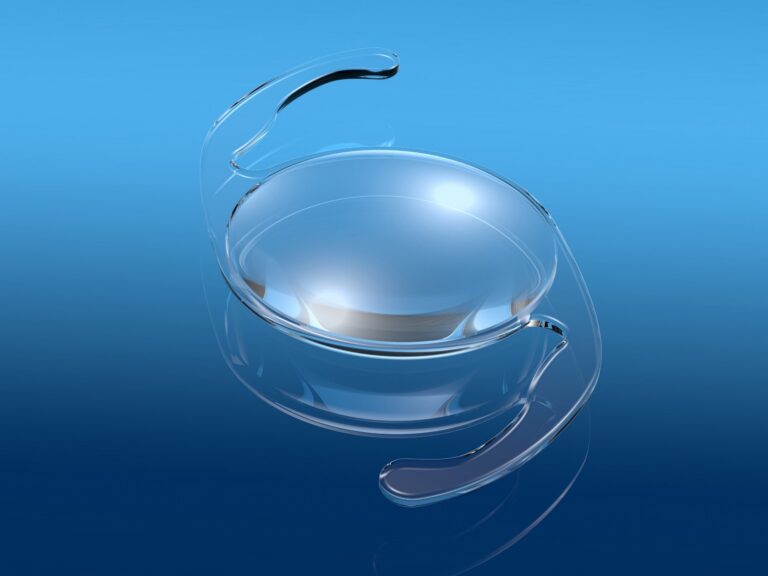What is a Cataract?
A cataract happens when the lens in the eye starts to fog, which results in vision impairment. In some cases, it can cause complete blindness if not detected early and treated correctly. Unfortunately, cataracts are an unavoidable part of the aging process. They begin after the age of 40 because the proteins that make up the eye’s lens usually start to deteriorate and/or clump together. The cloudiness eventually worsens and blocks light from arriving at the retina.
Developing cataracts is very common, in fact, cataract surgery is the most common surgery performed in the U.S. Almost 2 million people undergo cataract surgery a year. The disease can progress fairly slowly so those in the onset stages usually don’t know about it. This condition is an important reason why scheduling comprehensive eye exams at least every other year and yearly beginning at age 65 is vital to your overall ocular health.
Our team at Ophthalmology Associates of the Valley are trained in diagnosing and treating cataracts in its beginning stages, as well as in supporting our patients in successfully managing advancing symptoms. Contact either of our offices today to schedule a comprehensive exam and see how we can help you get in control of your symptoms. Both of our locations in Encino and West Hills can help diagnose and treat cataracts.
What Are The Benefits of Cataract Treatments?
Looking to improve your vision? Ophthalmology Associates of the Valley offers advanced cataract treatment that can dramatically improve your quality of life. Our state-of-the-art facility is located right in the heart of San Fernando Valley, making top-notch care accessible for our community.
Enhanced Vision
Cataract surgery replaces the cloudy lens, providing you with clear, bright vision.
Quick Recovery
Most patients experience rapid recovery and can return to daily activities within a few days.
Improved Independence
Better vision means you can drive, read, and participate in activities you love without relying on others.
Lower Risk of Other Eye Conditions
Effective cataract treatment can reduce the risk of further eye complications such as glaucoma.
What are Symptoms of Cataracts?






The initial symptom of cataracts is increased foggy eyesight that isn’t corrected by a patient’s current glasses prescription. Most patients begin to notice they require brighter light to be able to read. Other symptoms can include decreased night vision, unusual glare or halos, and eyesight with a general yellowish tint.
Cataracts don’t cause discomfort and are generally there for a long time before they lead to any noticeable side effects. In most cases, the disease starts to develop at some point between the ages of 40 – 50, but many patients don’t suffer from any cataract symptoms before reaching their 60s.
Are You A Candidate for Cataract Surgery?
Take our Self-Test and Find out!
What Causes Cataracts?
Cataracts are an inevitable part of aging and the natural breakdown of the proteins within the eye’s lens. This process happens to all people, though there are additional behavioral and health factors that often exacerbate the condition. Behavioral choices, such as using tobacco products, drinking too much or too often, and heavy sun exposure, have been associated with cataracts, as have health conditions, including diabetes mellitus and high blood pressure. Other factors that can aggravate the condition include:

How Do I Know if I Have Cataracts?
To determine whether a patient has cataracts, an eye doctor has to conduct a comprehensive eye exam. The team at Ophthalmology Associates of the Valley has years of experience performing specialized diagnostic tests. The tests that detect cataracts are quite easy, relatively brief, and cause minimal discomfort.
To start, one of our ophthalmologists will complete a routine acuity test. This is usually done using an eye chart. Next, we might perform a contrast sensitivity test. This is very similar to a vision test, except it measures how easily the patient can see the contrast in images.
Then, a slit-lamp exam is often conducted. For a slit-lamp exam, our team uses a special microscope that directs a very bright but particularly narrow “slit” of light into the eye to look at its more outward structures.
To complete the tests, we will conduct the retinal exam, and sometimes, a potential acuity (PAM) exam. Before these tests, patients will need eye drops to dilate their pupils. Enlarging the pupils is very important because it allows us to check the entire surface of the lens for any signs of cataracts.
If we find any cataracts, then we may perform an OCT or Ocular Coherence Tomography test to evaluate the central layers of the retina. If recommended for surgery, the OCT exam is very important to help determine which intraocular lens (IOL) a patient needs or may choose.
When Should You Have Cataracts Removed?
Once one of our ophthalmologists confirms a diagnosis of cataracts, we will begin to go over the different options for treatment. The treatments for cataracts are selected according to the advanced condition of the disease. In the beginning stages, a majority of patients simply need new prescription lenses. Patients with more advanced cataracts usually require a more advanced solution, femto laser assisted cataract surgery or FLACS. Our team is committed to offering each of our patients the most effective care.




